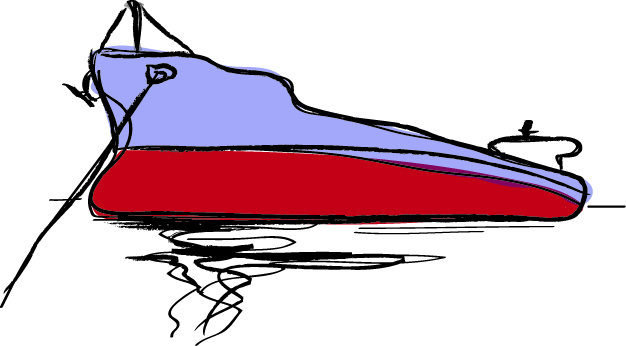Team:Groningen/Applications
From 2010.igem.org
Applications
A biofilm coating can be used for a great number of applications. We developed our hydrophobic coating keeping in mind that future development of our project could focus on adding other properties to a biofilm coating as well, creating functional coatings with different purposes. Utilizing the qualities of different biofilm forming bacteria or micro organisms and combining these coating properties with the ever growing stack of biobricks within the database could give rise to a variety of engineered biofilm machines, capable of transforming surfaces under many conditions.
Hydrophobic coatings
The potential benefits of hydrophobic coatings can be put to use in a wide variety of application areas; hydrophobic clothes, anti-fouling coatings, anti-corrosion coatings, hydrophobic paint and medical coatings for drug delivery or against biofilm formation. For these applications a lot of hydrophobic coatings have been developed. Not all of these coatings have been succesfully used outside the lab, so the search for a cheap, multi-functional hydrophobic coating is still ongoing.
Biofilm coatings
Although a biofilm is not ideal for all of these coating purposes (imagine a biofilm jacket), an hydrophobic biofilm coating could be applied in fields ranging from anti-fouling coatings on ships, peers and buoys, to coatings used to protect catheters and protheses from pathogenic bacteria. Moreover, with introducing our kill switch and our chaplin coating without living bacteria, a even broader range of applications can be taken into consideration as certain ethicial and safety issues are dealth with. A biofilm could be used as either a coating, or a coating machine: Growing, coating, dying and leaving behind a biobased coating.
The main advantage of a biofilm coating is that it is very cheap, applying it requires no technical pinnacles and it is more environmentally friendly than certain chemical coatings. Next to that, biofilms can grow on a wide variety of surfaces: They are found on your teeth, in catheters, in plumbing, in water cleaning installations (beneficial), in bioreactors and, if you're one of those students, on your bathroom floor.
So far there have been coatings with biological substances, but bacteria where only used to produce the coating material. In our project the bacteria will form a biofilm on the desired surface, which will then function as a coating. Our bacteria therefore execute the coating process themselves, which could save a lot of effort. In the case of using chaplins as a building blocks for a hydrophobic coating, the biofilm is also used to orient and anchor the proteins in the right way. As chaplins are amphipathic, the orientation in their pure form is determined by the properties of the surface they coat as well: Using a biofilm to structure them the right way is an easy and smart solution that helps us to get around some problems of using the chaplins in their pure form as a coating.
Anti-fouling coatings
Surface hydrophobicity could also be beneficial in the antifouling industry, for instance when applied on ships. When marine micro-organisms like algae or pocks adhere to the hull of ships, they form a layer which greatly increases drag in the water. This results in higher fuel costs and increased erosion. To prevent organisms to adhere to the hull of ships, chemical antifouling paints, which often contain copper and tin, are used. A lot of these chemicals eventually end up in the oceans ecosystems accumulating in all trophic levels of marine life and contaminating estuarial silt near shipping routes. With our biological coating this impact on the environment could be greatly reduced. When tested against a number of demands set up by L.D. Chambers et al. our hydrophobic coating performs quite well, although some critical point might be present as well:
'''Must be''' '''Must not be:''' Anticorrosive Antifouling Toxic to the environment Environmentally acceptable Persistent in the environment Economically viable Expensive Long life Chemically unstable A target for non-specific species A target for non-specific species Compatible with underlying system Resistant to abrasion/biodegradation/erosion Capable of protecting regardless of operational profile Smooth
Medical coatings
Because of their surface modifying abilities, hydrophobic biofilms of none-pathogenic bacteria may be used to prevent pathogenic biofilms from adhering to prothesis or catheters. Keeping in mind that growing a biofilm, even our good biofilm coating, in a catheter or on prothesis can give serious medical problems like shock or inflammation. Of course this would have to be extensively researched before the coating is applicable. Bacillus subtilis is not pathogenic but if needed another bacterium could be used to form the hydrophobic biofilm like Lactococcus lactus, a natural inhabitant of our body. The principle via which we form a Bacillus biofilm coating is applicable to a number of hosts. Next to that, research could be done to perhaps alter the chaplins so the coating could be functionalized for drug delivery, cell adhesion or anti-bacterial activity.
Concrete protection
As the Newcastle team enters this years’ competition with a B. subtilis machine that fixes cracks in concrete, preventing corrosion and water- or frost-induced damage to buildings, roads or monuments; we have a great addition to their project (or the other way around). Hydrophobic coatings are used to protect concrete structures from corrosion damage, especially when reinforced with metal bars. Our B. subtilis biofilm would be able to do the same thing by filling up cracks and reducing water inflow by chaplin production: thus preventing damage by water or ice.
A combination of both projects would make for great bacterial machinery: As the crack-filling bacteria repel the water and ice that is damaging concrete structures further damage is prevented and repair is accelerated.
References:
L.D. Chambers et al. - Modern approaches to marine antifouling coatings (2006)
Iwao Omae - Organotin antifouling paints and their alternatives (2003)
N. Voulvoulis, M. D. Scrimshaw, J. N. Lester - Alternative antifouling biocides (1999)
Cao et al. - Organotin pollution in China: an overview of the current state and potential health risk
N. Voulvoulis, M. D. Scrimshaw and J.N. Lester - Occurrence of Four Biocides Utilized in Antifouling Paints, as Alternatives to Organotin Compounds, in Waters and Sediments of a Commercial Estuary in the UK (2000)
Panagiotis Manoudis - Superhydrophobiccoating.com
M. Medeiros et al. - Efficacy of surface hydrophobic agents in reducing water and chloride ion penetration in concrete (2008)
K. Scholtmeijer et al. - The use of hydrophobins to functionalize surfaces (2004)
K. Scholtmeijer et al. -Fungal hydrophobins in medical and technical applications (2001)
 "
"

